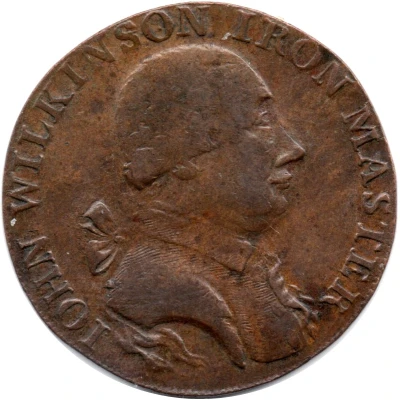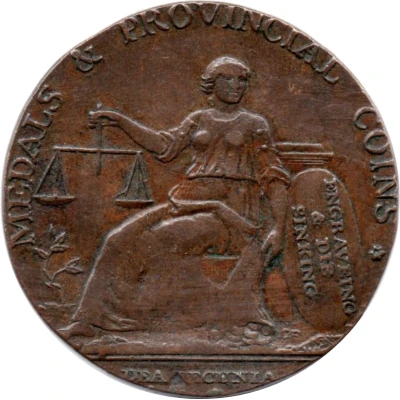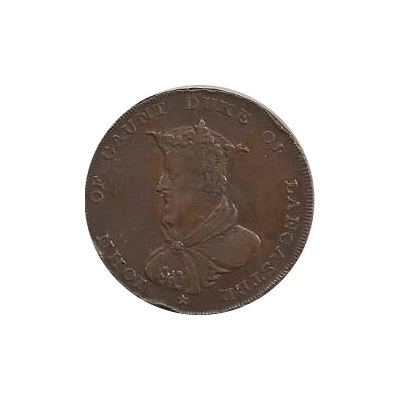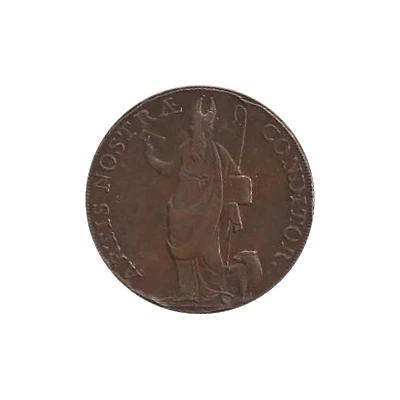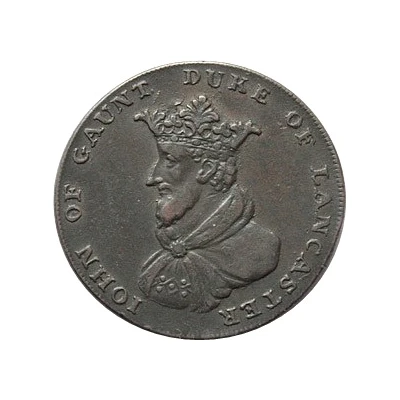
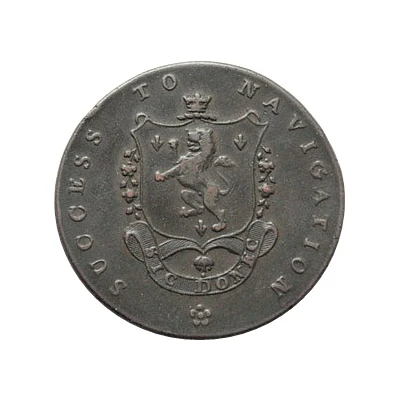

© ABC Coins & Tokens
½ Penny Lincolnshire - Sleaford / John of Gaunt ND
| Copper | 12 g | 30 mm |
| Issuer | United Kingdom (United Kingdom, British Overseas Territories and Crown Dependencies) |
|---|---|
| Type | Token |
| Years | 1791-1794 |
| Value | ½ Penny (1⁄480) |
| Currency | Conder tokens (1787-1797) |
| Composition | Copper |
| Weight | 12 g |
| Diameter | 30 mm |
| Shape | Round |
| Technique | Milled |
| Orientation | Coin alignment ↑↓ |
| Demonetized | Yes |
| Updated | 2024-10-09 |
| Numista | N#123271 |
|---|---|
| Rarity index | 84% |
Reverse
Shield of the Duke of Bridgewater (Argent, a lion rampant gules, between three pheons sable) surmounted by a ducal coronet, legend around
Script: Latin
Lettering:
SUCCESS TO NAVIGATION
SIC DONEC
Translation: Thus until
Engraver: Dixon
Edge
Inscribed
NOTE: varieties exist
Lettering: PAYABLE BY THOMAS BALL SEAFORD .+.+.+.+.
Comment
John of Gaunt, the fourth son of Edward III, was born at Ghent (Gaunt) around 1340 and was later made the Duke of Lancaster and was also the Earl of Lincoln. His son by his first wife, Blanche, later became Henry V. This curious token was constructed by Lutwyche for Thomas Ball, a grocer and ironmonger of Sleaford, Lincolnshire. He used John of Gaunt's head from Worswick's Lancaster token on one side and the Duke of Bridgewater's arms from Fielding's token on the other so like many Conder tokens of the time, it is effectively a mule and with only three cwts originally struck, it is quite scarce.Interesting fact
One interesting fact about the Token ½ Penny (Lincolnshire - Sleaford / John of Gaunt) ND (1791-1794) coin is that it was issued during a time of currency shortages in the United Kingdom, particularly in rural areas. To address this issue, local merchants and traders began issuing their own copper tokens, like this one, which were accepted as currency by the community. This coin is a rare example of a local token that was issued during this time period and is a testament to the resourcefulness and resilience of the people during that era.
